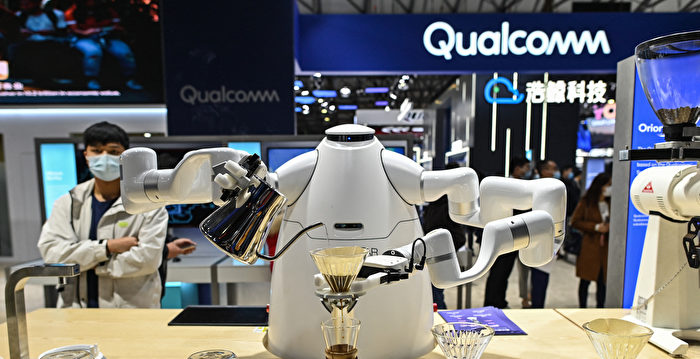[Epoch Times, February 27, 2022](Comprehensive report by Yi Fan, reporter from The Epoch Times Special Department) In the field of industrial robots, China is the world‘s largest production base and consumer market, but China has almost no pricing power, because of its key technologies in the hands of other countries.
At the end of 2021, the Ministry of Industry and Information Technology of the Communist Party of China stated that China has become the world‘s largest consumer of industrial robots for eight consecutive years. In 2020, the density of manufacturing robots will reach 246 units per 10,000 people, nearly twice the global average.
In China’s industrial robot industry, four international robot giants (commonly known as the “Four Families”) account for the majority of the market share. They are Japan’s FANUC, Switzerland’s ABB, Japan’s Yaskawa and Germany’s KUKA (acquired by a US company).
According to the “Industrial Robot Industry Report” published by China Debon Securities in early 2021, in the brand structure of China’s industrial robot market in 2019, the “four major families” together accounted for about 39%; other international second-tier brands also accounted for a certain market share; and Several brands made in China together account for less than 9%. Another 30% or so of the market share in the report is classified as “other”, which is not specified.
Industrial robots are automated machines with multiple joints or degrees of freedom. It has a certain perception function, can realize independent judgment and decision-making on the environment and work objects, and can replace manual labor to complete all kinds of heavy, tedious or harmful physical labor. To complete complex movements, the “brain” of an industrial robot—the core controller—must be smart enough, which directly affects the stability and accuracy of the machine. These are the two most important criteria for measuring the pros and cons of robots.
Chinese financial self-media Huashang Taolue said in a commentary in February this year that the biggest reason why Chinese-made robots are inferior to other countries is the “algorithmic gap” in the core control system.
The system composed of algorithms is equivalent to “language”, which can transmit the ideas of “brain”. If the core algorithm is not mastered, the stability, failure rate, and ease of use of the robot will be greatly insufficient, so that the robot cannot accurately complete some complex actions. Therefore, the failure rate of Chinese-made robots may be several times that of imported machines. Chinese companies would rather buy second-hand products from other countries at high prices than buy low-priced Chinese products.
The algorithm gap is not only reflected in the core controller, it also slows down the response speed of the servo system, because every time the robot completes an action, the core controller, servo driver and servo motor are required to work together.
Control system, reducer and servo system are considered to be the three main components of the upstream products in the industrial robot industry chain. In June last year, the Automation Committee of the Chinese academic group published a signed article “Panoramic Analysis of the Industrial Robot Industry Chain”. The article said that the cost of these three core components accounted for about 70% of the total cost of industrial robots.
The article said that in China’s servo motors, the high-end market is mainly monopolized by international companies. Imported products account for more than 70% of China’s industrial robot servo market, mainly from Japan, Europe and the United States. Among them, Japanese products ranked first with a market share of more than 50%.
In addition, 85% of the precision reducers necessary for manufacturing industrial robots in China are owned by foreign investors. Japan’s Nabtesco and Harmonic together account for about 75% of the global robotic reducer market.
Manufacturing precision reducers not only requires a large investment, but also has high technical difficulties and extremely high technical barriers. Therefore, in the field of industrial robots, China has almost no pricing power.
At the same time, industrial robots made in China are barely used to produce products with low precision requirements, and high-end fields such as aerospace and military industry can only rely on imported robots.
Editor in charge: Lian Shuhua
